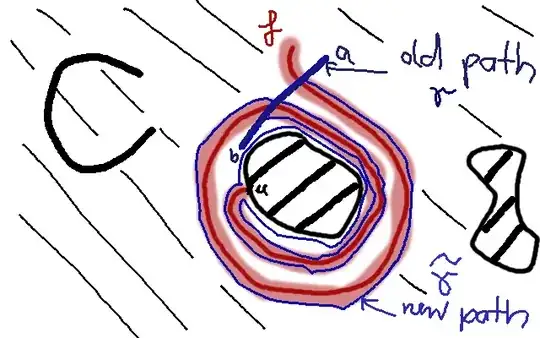We can show that for every $x \in U \setminus f([0,1])$, we can get from $x$ to $u$ with a curve in $U \setminus f([0,1])$.
Let $g$ be the curve that connect between $x$ and $u$ in $U$.
If $f$ and $g$ don't intersect, we're done.
Otherwise, let $y$ be the first point where the two curves intersect. $f$ is injective, therefore exists unique $0<t<1$ s.t. $ y=f(t)$.
The set $[0,t]$ is compact in $U$ open set, therefore there exists $\delta>0$ s.t. $B(f([0,t]), \delta) \subset U$. It's easy to see that the set $B(f([0,t]), \delta) \setminus f((0,t))$ is connected. So there exists a curve $h$ from $f(t)=y$ to $f(0)=u$ and by concatenation of $h$ with the first part of $g$ which connect from $x$ to $y$, we'll get a curve in $U \setminus f([0,1])$ from $x$ to $u$.
Edit:
I've mistakenly shown that $U \setminus f((0,1))$ is connected. So to fix it, for $x,y \in U \setminus f([0,1])$, do the same process as describe above for $t_0,t_1$ where $f(t_0), f(t_1)$ are the first and last intersections of the original curve between $x$ and $y$ and the curve $f$.
